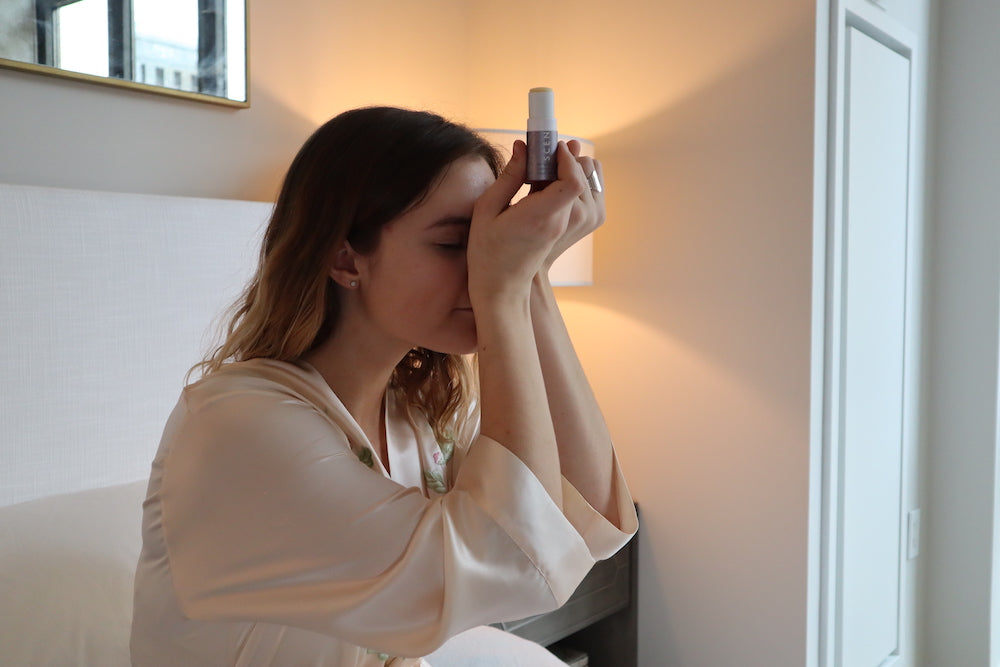
Understandably you might think that Palmarosa is a member of the rose family. It’s not! And if that’s not enough to confuse you, its Latin name, Cymbopogon Martinii, conjures up images of a Welsh alcoholic spirit. In fact, this native Indian herbaceous grass, related to the citronella and lemongrass family is perhaps less exotic than its name suggests. That said, with tall grassy tufts and a sweet scent with citrus and rose vibes, this is a plant that’s been used for thousands of years for its fresh fragrance and therapeutic properties.
Palmarosa Essential Oil
Palmarosa is used to manage a variety of conditions like fever and jaundice in traditional ayurvedic treatments. Whilst in Chinese medicine, it’s often the go-to treatment for inflammation. The crowd-pleasing fragrance has also been popular with the western world. So much so, that you’ll find it as a component in many soaps, cosmetic products and even in tobacco. The popular lemony odour with a rosy note means that it's often used as an ingredient in ‘verbena’ tea too. Today, Palmarosa remains as celebrated as ever and is cultivated all over the world, thriving in areas with abundant sunshine and humid conditions like Indonesia and Nepal.
How is Palmarosa Essential Oil Made?
There’s no quick route to growing Palmarosa. It’s a slow-growing plant that takes around 3 months to fully bloom. However, the plants that are grown specifically for essential oil production are harvested just before the flowers turn completely red. Once cropped, the grass is dried out to increase the essential oil yield before going through a process of steam distillation. By the time that the end-product is bottled, it looks like a pale-yellow essential oil.
It’s thought that Palmarosa can soothe angry or inflamed skin, promoting a healthier complexion whilst balancing moisture levels. It’s no wonder then that many skincare and cosmetic products contain this versatile essential oil. The benefits don’t end there either, because there’s evidence that Palmarosa essential oil has many mental health benefits too.
How Does Aromatherapy Control Mood?
Our sense of smell is extremely sensitive. And for good reason too. Because when we inhale essential oils, invisible molecules instantly enter our olfactory system and rapidly travel along a pathway to our brain’s emotional centre, the Limbic System. This primitive part of the brain houses the amygdala and hippocampus, where memories, emotions, and mood management are all stored. A bit like a giant database full of records for those that like a metaphor.
When a smell is distinguished, these facets of the brain search through all the records to find a match. Fresh cut grass. The school playing field. Sizzling bacon. Dad’s epic Sunday morning fry-up. Lavender. Holidays in the South of France. You get the idea.
The Limbic System also plays a part in controlling other autonomic functions like breathing, heart rate and blood pressure. Interestingly these are also key indicators of our state of mind and can illustrate how anxious we may be feeling.
It's possible to use aromatherapy to create a record in your brain. For example, Lavender is known to be a calming essential oil. You use it and feel calmer. It’s filed into the database. The more you use it and feel calmer, the stronger the association becomes. It’s also thought that because essential oils target the Limbic System, they directly impact on these factors and help to slow down breathing and heart rate or lower blood pressure.
That’s why it’s a great idea to make aromatherapy a habit and build it into your day. The more you use it, the quicker your body will recognise that smell and transition into the desired state of mind.

How to Control Your Mood with Palmarosa
The scent of Palmarosa is soothing, calming, and balancing. It’s a good one to use when hormones are out of sync like during menstruation or menopause. Scentered’s SLEEP WELL range contains Palmarosa because it's highly effective calming properties are ideal at bedtime, helping you to settle into a deep and restorative sleep.
A great night of sleep really up-lift your mood and mindset during the day. If you suffer from poor sleep, jet lag, night-time anxiety, restlessness, or unbroken sleep, this is the range for you. For maximum effect, we recommend burning our SLEEP WELL Aromatherapy Candle before bedtime, whilst you take a bath or even whilst you’re reading a good book or relaxing in front of the tv.
Then pop your SLEEP WELL Aromatherapy Balm onto your wrists, neck and temples 15 minutes before bedtime and inhale deeply for three breaths. You’ll notice yourself winding down, feeling more relaxed and ready for bedtime. Of course, you can re-apply during the night should you wake up and Sleep Well will help you drift off again.
We would love to hear about your mental wellness journey. You can also keep in touch via our Instagram @iamscentered or sign up to our newsletter for updates, news and offers.
